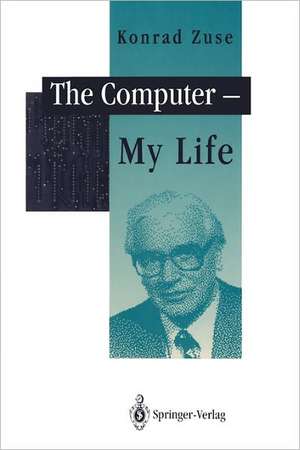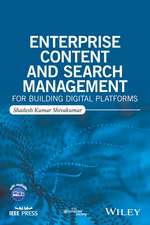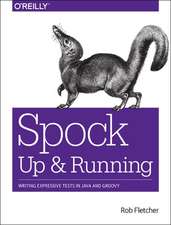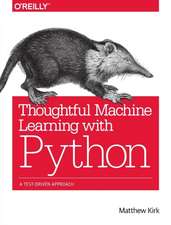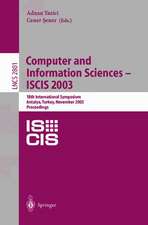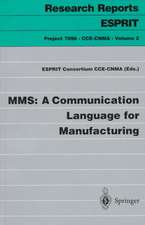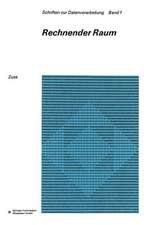The Computer - My Life
Autor Konrad Zuse Cuvânt înainte de F. L. Bauer Traducere de P. McKenna Cuvânt înainte de H. Zemanek Traducere de J.A. Rossen Limba Engleză Paperback – dec 2010
One of the great pioneers of the computer age, Konrad Zuse created the first stored-program computer in 1941 and continued to build machines for a quarter-century, as well as writing books and articles. Filled with fascinating asides, this work is his autobiography.
| Toate formatele și edițiile | Preț | Express |
|---|---|---|
| Paperback (1) | 299.04 lei 3-5 săpt. | |
| Springer Berlin, Heidelberg – dec 2010 | 299.04 lei 3-5 săpt. | |
| Hardback (1) | 414.60 lei 3-5 săpt. | +106.80 lei 6-12 zile |
| Springer Berlin, Heidelberg – 28 sep 1993 | 414.60 lei 3-5 săpt. | +106.80 lei 6-12 zile |
Preț: 299.04 lei
Preț vechi: 373.80 lei
-20% Nou
Puncte Express: 449
Preț estimativ în valută:
57.23€ • 59.67$ • 47.56£
57.23€ • 59.67$ • 47.56£
Carte disponibilă
Livrare economică 28 februarie-14 martie
Preluare comenzi: 021 569.72.76
Specificații
ISBN-13: 9783642081514
ISBN-10: 3642081517
Pagini: 264
Ilustrații: XIV, 246 p.
Dimensiuni: 155 x 235 x 14 mm
Greutate: 0.37 kg
Ediția:Softcover reprint of hardcover 1st ed. 1993
Editura: Springer Berlin, Heidelberg
Colecția Springer
Locul publicării:Berlin, Heidelberg, Germany
ISBN-10: 3642081517
Pagini: 264
Ilustrații: XIV, 246 p.
Dimensiuni: 155 x 235 x 14 mm
Greutate: 0.37 kg
Ediția:Softcover reprint of hardcover 1st ed. 1993
Editura: Springer Berlin, Heidelberg
Colecția Springer
Locul publicării:Berlin, Heidelberg, Germany
Public țintă
Popular/generalCuprins
1 Ancestors and parents — Early childhood memories — School days — Metropolis — Abitur.- 2 Studies (not without detours and by-ways) and general studies — First inventions — The Akademischer Verein Motiv — Student life between science and politics.- 3 The early years of the computer (and a digression on its prehistory) — Colleagues remember — From mechanics to electromechanics — Schreyer’s electronic computing machine — First outside contacts — Thoughts on the future.- 4 Outbreak of the war and (first) call-up — Structural engineer in aircraft construction — The Z2 and Z3 — Second call-up — Zuse Ingenieurbüro und Apparatebau, Berlin — The first process computer.- 5 Origins of the Z4 — News from the United States — Attempt at a Ph.D. dissertation — Computing machine for logic operations — Final months of the war in Berlin — The evacuation — Z4 completed in Göttingen — Final war days in the Allgäu.- 6 End of the war — Refugees in Hinterstein — The Plankalkül — The computing universe — Automation and self-reproducing systems — A logarithmic computing machine — Computer development in Germany and the United States — Move to Hopferau near Füssen — The mill of the Patent Office.- 7 The Zuse-Ingenieurbüro, Hopferau bei Füssen — First business partners: IBM and Remington Rand — The first pipelining design — Founding of ZUSE KG in Neukirchen — The Z4 in the ETH in Zurich — The computer in Europe: taking stock — Lost opportunities — The first German contract: the Z5.- 8 The partners leave — Computing machine for land use zoning — Electronics gains acceptance — First funds from the Deutsche Forschungsgemeinschaft — Losing one’s way (and possibly a lost opportunity) — The arrayprocessor — Custom work for geodesists — The Graphomat Z64 — Growth and crisis of ZUSE KG — The end.- 9 Free for science (again) — Honors — A look to the future.- Appendices.- 1. From Forms to Program Control.- 2. Construction of Devices.- 3. On Computer Architecture.- 4. On the Plan Calculus.- 5. Lecture on the Occasion of the Award of the Honorary Doctorate by the Technical University of Berlin (Extract).- 6. The Computer Did Not Fall from Heaven.- Notes.- References.- Name Index.- Computer Index.
Recenzii
From the reviews:
“The book tells the story of an inventor and an entrepreneur. It is refreshing because it allows one to see things outside of the box, beyond the more traditional story, so that he or she can better appreciate key aspects of computing and computation. Furthermore, the book tells the story of a father, a hard worker, and a recognized inventor, including pictures and plenty of anecdotes. … The book is probably the only reliable source about Konrad Zuse’s life and contributions to the world.” (Hector Zenil, ACM Computing Reviews, November, 2011)
“The book tells the story of an inventor and an entrepreneur. It is refreshing because it allows one to see things outside of the box, beyond the more traditional story, so that he or she can better appreciate key aspects of computing and computation. Furthermore, the book tells the story of a father, a hard worker, and a recognized inventor, including pictures and plenty of anecdotes. … The book is probably the only reliable source about Konrad Zuse’s life and contributions to the world.” (Hector Zenil, ACM Computing Reviews, November, 2011)
